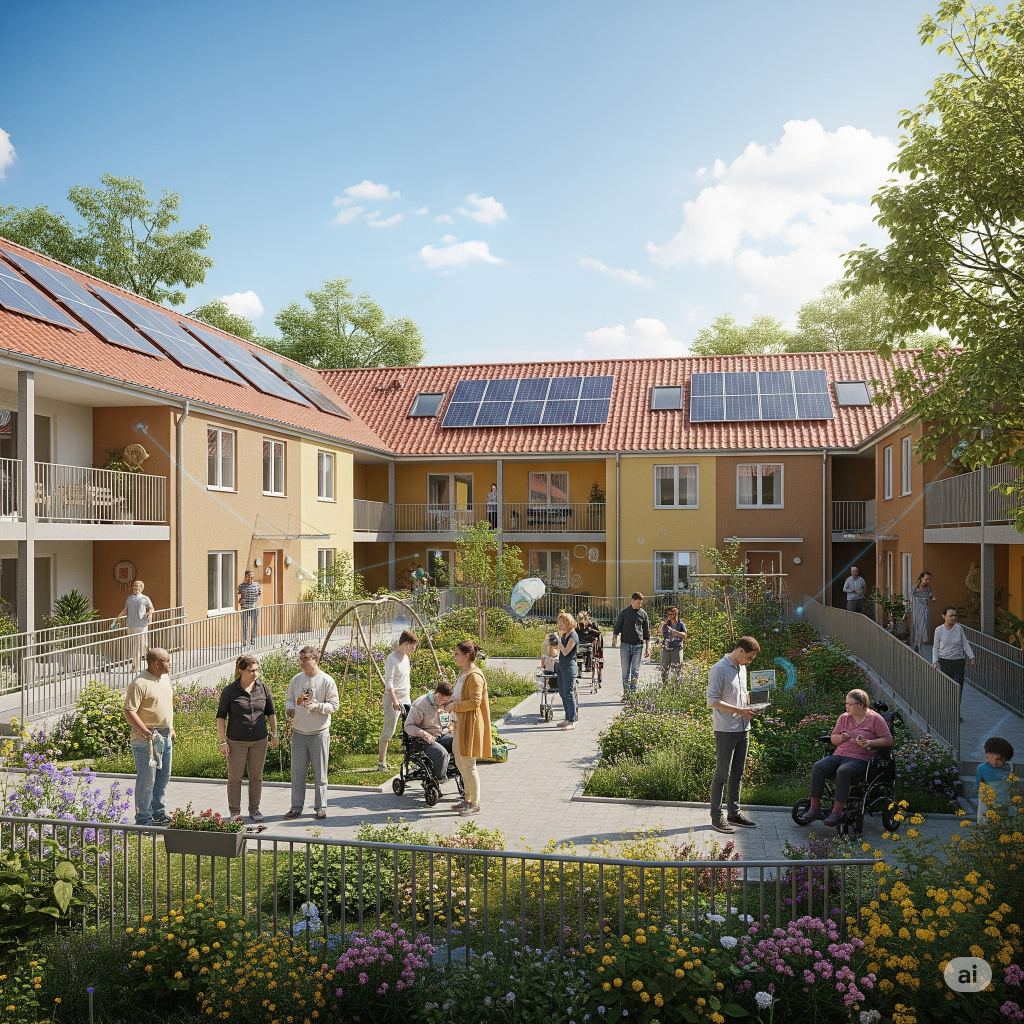Creating a home is about more than shelter—it’s about dignity, independence, and belonging. For adults with special needs, innovative housing solutions are transforming lives by blending accessibility, community, and autonomy. Here’s a detailed look at cutting-edge living models and what families and service providers need to know.
1. Tiny and Modular Homes
Compact, cost-effective, and highly customizable, tiny and modular homes empower adults with special needs to live independently. These homes can be built off-site and fitted with features like wheelchair ramps, roll-in showers, and adjustable counters—without the expense of full-scale renovations.
2. Co‑Housing & Shared Living
Co‑housing brings privacy—each resident has a private unit—alongside shared communal spaces like kitchens or gardens. Shared living arrangements like host homes, group homes, or roommate models offer tailored support while fostering companionship and cost-sharing .
3. Supportive & Integrated Community Housing
Models like supportive housing and integrated community living align adults with special needs alongside other populations, whether seniors or families. Residents access intermittent supports while remaining active community members.
4. Smart Homes & Assistive Tech
Tech-savvy dwellings now offer voice-controlled lighting, automated doors, fall detection, and smart locks—boosting safety and independence. Systems like the Internet of Things (IoT)—including smart sensors and remote monitoring—can support up to ten homes simultaneously.
5. Universal & Transgenerational Design
Homes crafted with universal/transgenerational design feature wide hallways, no-step entries, lever handles, and accessible bathrooms—carefully designed so residents don’t feel singled out while ensuring long-term independence.
6. Specialized Complexes & Mixed‑Use Developments
Projects like Weinberg Commons (NJ) and The Kelsey Civic Center (San Francisco) create mixed communities with housing, amenities, and support services woven together. Housing is fully accessible with built-in supports and onsite assistance.
7. Cooperative and Multi‑Family Living Models
The CHS multi-family model has adults with varying support needs sharing adjacent units, allowing shared staff support, communal meals, and social activities—with caregivers living onsite.
8. Sustainable & Eco‑Friendly Communities
Eco-conscious design is becoming standard, with solar panels, rainwater harvesting, green spaces, and passive design integrated into accessible homes. These solutions support sustainability while enhancing affordability and wellness.
9. Housing First & Supportive Services
Housing First models, originally for homelessness, offer permanent, affordable units alongside case-management and self-support systems—preventing crises and improving stability .
10. Intergenerational & Inclusive Models
Projects like Fairfax Griot Village combine seniors and families, incorporating universal design for inclusive living that benefits residents with varied abilities, including adults with special needs.
💡 Why These Solutions Matter
- Independence & Choice – Residents choose how to live, whom to live with, and receive supports without institutionalization.
- Community Integration – Living alongside neighbors fosters social bonds and reduces isolation.
- Cost‑Effectiveness – Shared resources and modular construction lower expenses.
- Scalable & Personalizable – Modular designs adapt to evolving needs.
- Enhanced Well‑Being – Universal design and smart tech promote safety and mental wellness.
- Environmental Benefits – Sustainable housing lowers utility costs and supports community health.
🛠 What Families & Providers Should Know
- Assess individual preferences—true independence looks different for everyone.
- Involve future residents in design and technology planning.
- Integrate support services—case management, health visits, accessible transport, and community hubs.
- Collaborate with inclusive developers, nonprofits, and government agencies.
- Use universal design principles from the start.
- Evaluate outcomes—tracking resident satisfaction, cost, and community integration.
Conclusion
Innovative housing for adults with special needs is revolutionizing care—merging autonomy, inclusion, and sustainability in homes people love. These models uplift individuals, families, and communities, creating environments that are accessible, safe, and inspiring.

